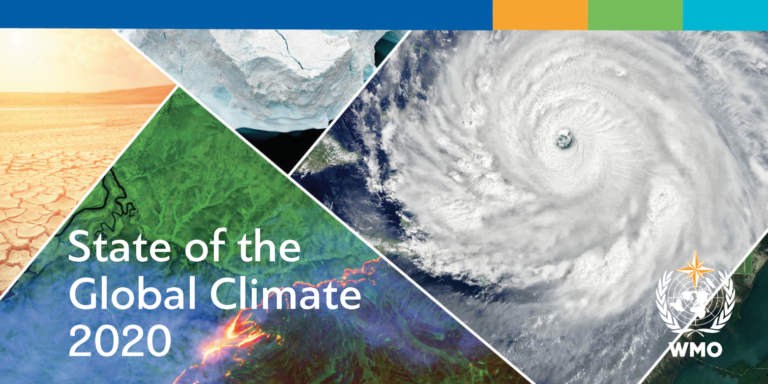The WMO has released its State of the Global Climate report, which has revealed that the global average temperature in 2020 was about 1.2°C above pre-industrial level.
According to the UN, that figure is “dangerously close” to the 1.5°C limit advocated by scientists to starve off the worst impacts of climate change.
The 2020 report documents indicators of the climate system, including greenhouse gas concentrations, increasing land and ocean temperatures, sea level rise, melting ice and glacier retreat and extreme weather. It also highlights impacts on socio-economic development, migration and displacement, food security and land and marine ecosystems.
According to the report 2020 was one of the three warmest years on record, despite a cooling La Niña event. The global average temperature was about 1.2°C above the pre-industrial (1850-1900) level. The six years since 2015 have been the warmest on record. 2011-2020 was the warmest decade on record.
“It has been 28 years since the WMO issued the first state of the climate report in 1993, due to the concerns raised at that time about projected climate change. While understanding of the climate system and computing power have increased since then, the basic message remains the same and we now have 28 more years of data that show significant temperature increases over land and sea as well as other changes like sea level rise, melting of sea ice and glaciers and changes in precipitation patterns. This underscores the robustness of climate science based on the physical laws governing the behaviour of the climate system,” said WMO secretary-general professor Petteri Taalas.
“All key climate indicators and associated impact information provided in this report highlight relentless, continuing climate change, an increasing occurrence and intensification of extreme events, and severe losses and damage, affecting people, societies and economies. The negative trend in climate will continue for the coming decades independent of our success in mitigation. It is therefore important to invest in adaptation. One of the most powerful ways to adapt is to invest in early warning services and weather observing networks. Several less developed countries have major gaps in their observing systems and are lacking state of the art weather, climate and water services,” Taalas added.
“This report shows that we have no time to waste,” UN secretary-general, António Guterres continued. “The climate is changing, and the impacts are already too costly for people and the planet. This is the year for action. Countries need to commit to net zero emissions by 2050. They need to submit, well ahead of COP26 in Glasgow, ambitious national climate plans that will collectively cut global emissions by 45% compared to 2010 levels by 2030. And they need to act now to protect people against the disastrous effects of climate change.”



